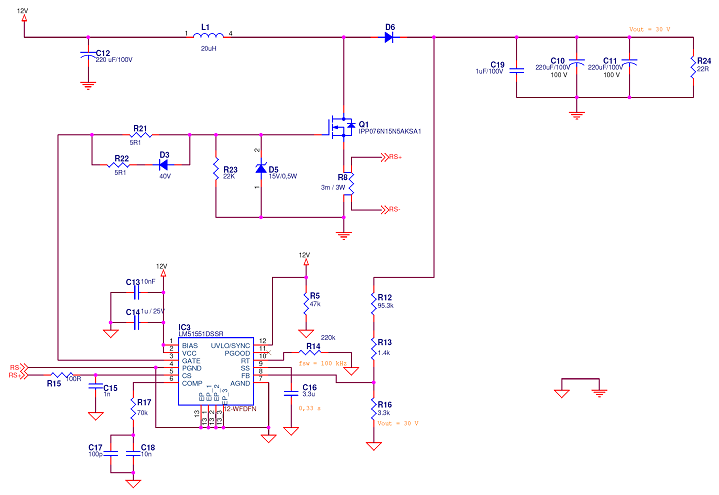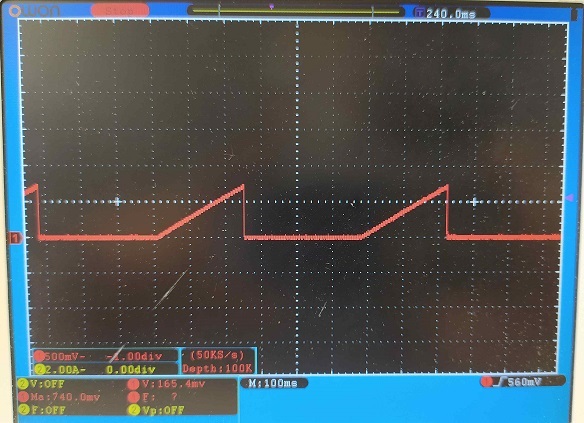Other Parts Discussed in Thread: LM5155, LM51561H
Hello,
We have designed a Boost converter based on the LM51551 controller. The original design has 50-65 V as input, and 70 V as output, but to test the board we are feeding the input with 12 V and the output is set to 30 V. The switching frequency is 100 kHz. The problem is the controller is continously entering into the hiccup mode; we have tested without load and with several small loads, such as a 22-ohm resistor, and the performance is the same in every case.
Since we did not manage to find the problem, we have made some changes in the testing board to simplify and to get a design as close as possible to the reference design of the datasheets. This is what is currently mounted:

The last change we have done is removing the R15 resistor and shortcircuiting to ground the CS input by changing the C15 capacitor by a 0 ohms resistor. By means of this, overload should not occur and therefore it should prevent entering into the hiccup mode. However, the controller still hiccups.
We know it hiccups by checking the voltage in the SS pin. This is a picture of it:

The time until the next start is over 325 ms, that is, 32768 cycles at 100 kHz.
We have mounted two boards and both have the same performance, so it seems a design problem (schematics or PCB).
Any idea or clue to solve this problem will be greatly welcome.
Thanks in advance.
Javier

